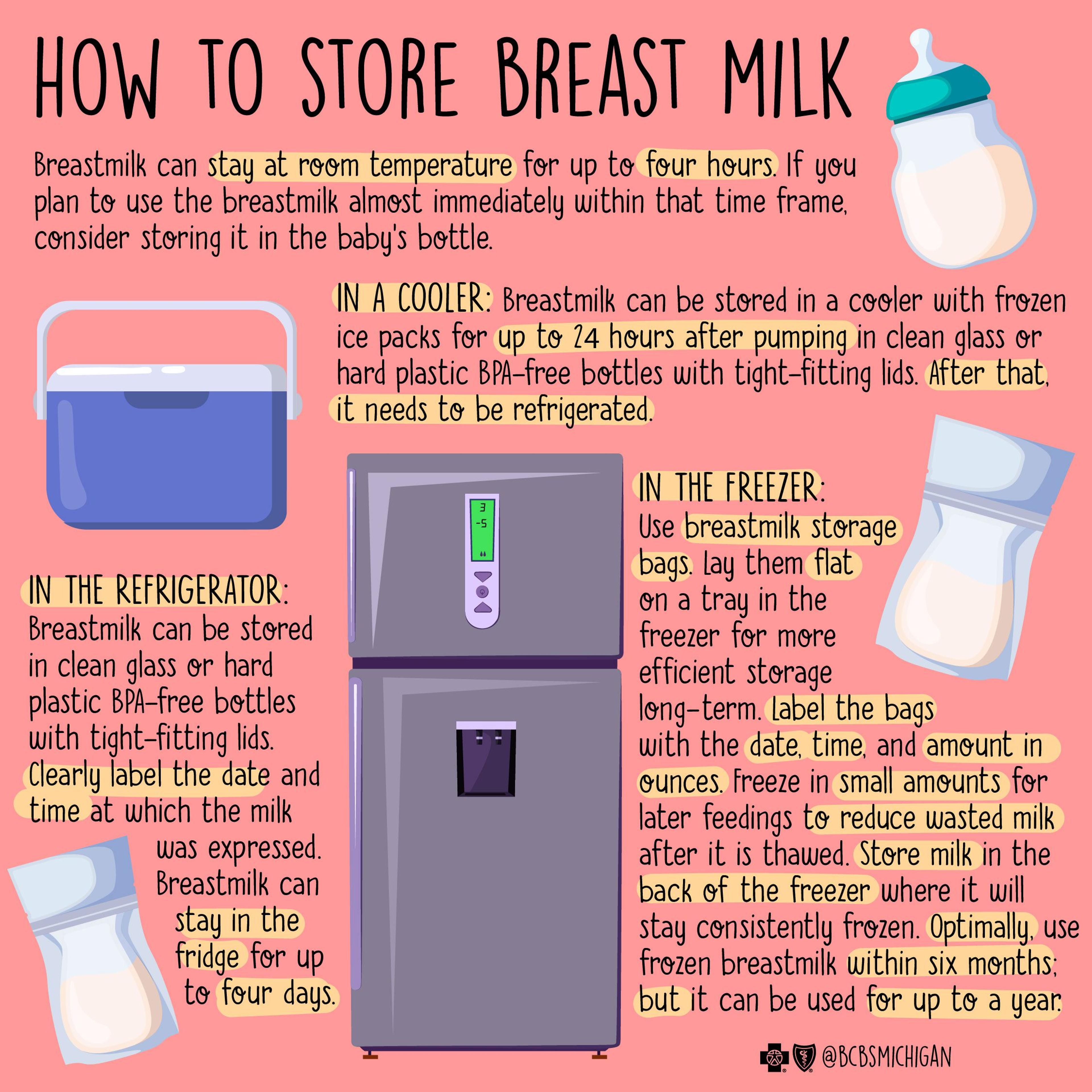Essentials for Pumping and Storing Breastmilk
Amy Barczy
| 4 min read

Breastmilk is a fantastic food source for newborns and infants, and breastfeeding provides a wealth of benefits for mom and baby. There are numerous reasons why a lactating mother might need to use a breast pump: they can help increase milk supply or provide milk to bottle feed a baby. Breast pumps can also help to continue the breastfeeding relationship when working mothers are separated from their babies.
Pumping and storing breastmilk does take additional supplies and planning – but can help provide infants with many of the same benefits of direct breastfeeding. Here are some basics to learn to help mothers on their pumping journey.
Ways to pump breastmilk
Milk can be expressed in several ways:
- Hand expression: Mothers can use their hands to express milk from their breasts. This is a good option for situations in case of emergency or if you don’t have your breast pump with you.
- Manual breast pump: A device that you use to pump milk using your hand and wrist. This is a good option if you only pump occasionally.
- Electric breast pump: There are many options on the market for electric breast pumps, which run on batteries or need to be plugged in to an outlet. Some require you to sit down and pump; others allow you to be mobile and hands-free. They provide a powerful pumping experience and are best if you need to pump every day or multiple times a day.
Health insurance companies often help cover the cost of electric and manual breast pumps.

How to store breastmilk
After pumping, breastmilk can stay at room temperature for up to four hours. If you plan to use the breastmilk almost immediately within that time frame, consider storing it in the baby’s bottle.
If you plan on using expressed breastmilk in the future, it needs to be stored properly:
- In a cooler: Breastmilk can be stored in a cooler with frozen ice packs for up to 24 hours after pumping in clean glass or hard plastic BPA-free bottles with tight-fitting lids. After that, it needs to be refrigerated.
- In the refrigerator: Breastmilk can be stored in clean glass or hard plastic BPA-free bottles with tight-fitting lids. Clearly label the date and time at which the milk was expressed. Breastmilk can stay in the fridge for up to four days.
- In the freezer: Use breastmilk storage bags. Lay them flat on a tray in the freezer so the breastmilk freezes into a flat rectangle that can later be stacked in a storage bin in the freezer. Clearly label the bags with the date and time at which the milk was expressed, as well as the amount in ounces or cups. Freeze in small amounts for later feedings to reduce wasted milk after it is thawed. Store milk in the back of the freezer where it will stay consistently frozen. Optimally, use frozen breastmilk within six months; but it can be used for up to a year.
How to thaw frozen breastmilk
- Take the frozen milk out of the freezer and place it in the refrigerator overnight.
- Swirl the container to mix the fat back in with the milk, which often separates during the freezing process. Do not shake the container.
- Once the breastmilk has thawed, store it in the fridge and use it within 24 hours.
How to warm up breastmilk
Some babies may prefer warm breastmilk to cold breastmilk; however, breastmilk does not need to be warmed up.
If you do choose to warm up breastmilk before feeding, follow these steps:
- If using frozen breastmilk, thaw it in the refrigerator first before warming it up.
- Keep the container sealed during the warm-up process.
- Hold the container under warm (not hot) running water or place it in a container of warm (not hot) water.
- Never put the container of breastmilk in the microwave.
- Test the milk first before feeding to baby.
For more tips and information about pumping and storing breastmilk, visit cdc.gov.
More from A Healthier Michigan:
Photo credit: Getty Images





